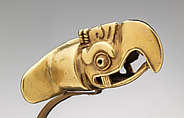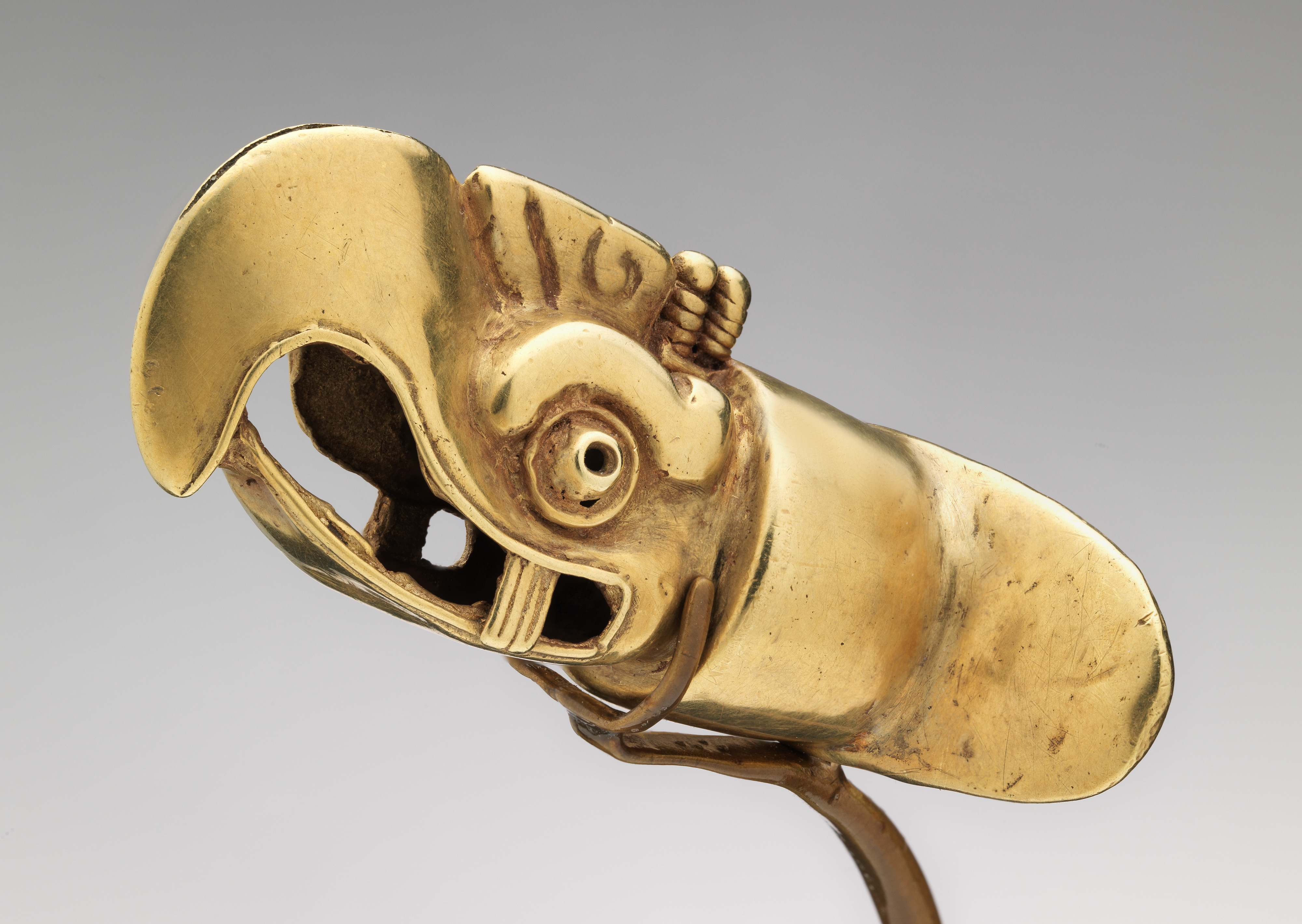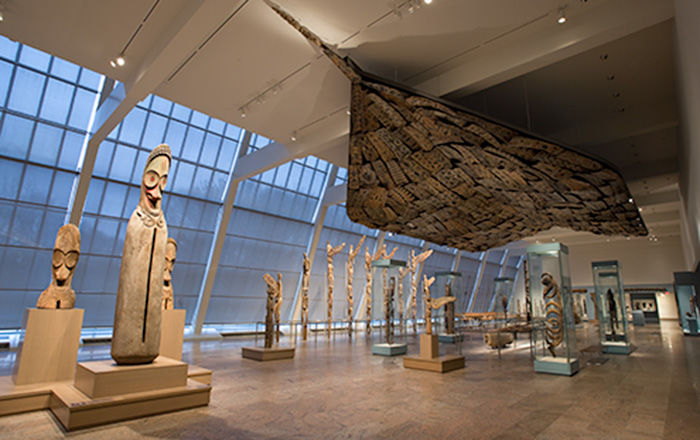Labret, Eagle Head
Binder Mexica artist(s)
Not on view
Finely crafted from a pale-yellow gold, this labret (tentetl in Nahuatl) takes the form of an eagle ready to attack its prey. Worn through a piercing made underneath the bottom lip, gold labrets were physical manifestations of power and class throughout the Mexica (Aztec) Empire. An arrangement of abstracted motifs adorns the eagle’s brow and crest, elevating the creature’s mystical depiction. Beneath its curled brow lies a pair of protruding eyes that would have likely held an inlay to accentuate the raptor’s ever-observant eye. The curved beak, held up by two vertical supports at the back of the mouth, suggests an eagle screaming out an ominous hunting call. Though less than two inches long, the goldwork’s radiant elements would have brilliantly glowed in the sunlight.
Eagles were symbolically embedded within Mexica thought. In their mythological origins, the Mexica were divinely instructed by Huitzilopochtli, patron god of the Mexica, to settle on an island where an eagle was perched above a prickly pear cactus—becoming the nexus of the Mexica world, Tenochtitlan. The Codex Mendoza, a colonial document, depicts the mythical founding of Tenochtitlan by centering a Golden Eagle (Aquila crhysaetos) atop a prickly pear cactus on its frontispiece. As entities of the realm above land, the eagle’s ability to soar across the sky resembled the Sun’s passage traversing through the heavens above and underworld below. Such a journey was fit for only the most precious of beings, much like the dauntless eagle.
As a sacred bird of prey fashioned from an equally sacred material, this rather ornate labret would immediately distinguish the status of its wearer. Gold, or teocuitlatl in Nahuatl, was believed to be the earthly materialization of the gods’ excrement. Its radiant and glowing qualities were intimately tied to the gods and were exclusively worn by the Mexica ruler—the huey tlatoani (great speaker)—and his military allies. A folio in the Codex Ixtlilxochitl presents the Texcoco tlatoani Nezahualcoyotl dressed in sacred warrior regalia, wearing an eagle-headed labret much like the present example. Embodying the unmatched ferocity of an eagle, this and other labrets featuring eagle heads would have likely been worn as military regalia exclusive to elite warriors.
Carol Velandia, Adrienne Arsht Intern, 2024
Further Reading
Alva Ixtlilxochitl, Fernando de. 1582. Codex Ixlilxochitl, Folios 105v and 106r. https://www.loc.gov/item/2021668123/.
Evans, Susan Toby, ed. Ancient Mexican Art at Dumbarton Oaks: Central Highlands, Southwestern Highlands, Gulf Lowlands. Washington, DC: Dumbarton Oaks Research Library and Collection, 2010, p. 108-109, no. 36.
McEwan, Colin., López Luján, Leonardo, and Consejo Nacional para la Cultura y las Artes. Moctezuma: Aztec Ruler. London: British Museum, 2009, p. 86-88.
Codex Mendoza, the Mexican Manuscript Known as the Collection of Mendoza and Preserved in the Bodleian Library, Oxford. 1938. Waterlow & Sons, Limited. https://collections.library.yale.edu/catalog/17373370.
Pillsbury, Joanne, Timothy F. Potts, and Kim N. Richter, eds. Golden Kingdoms: Luxury Arts in the Ancient Americas. Los Angeles: J. Paul Getty Museum, 2017, p. 256, no. 204.
Sahagun, Bernardino de. Florentine Codex: General History of the Things of New Spain. Book 11, Earthly Things. Translated by Arthur J.O. Anderson and Charles E. Dibble. Santa Fe, N.M.: School of American Research; Salt Lake City: University of Utah Press, 1953-1982.
This image cannot be enlarged, viewed at full screen, or downloaded.
This artwork is meant to be viewed from right to left. Scroll left to view more.



